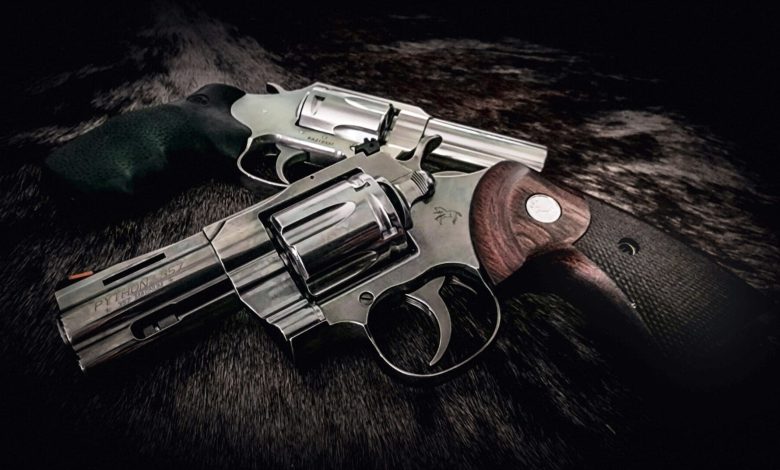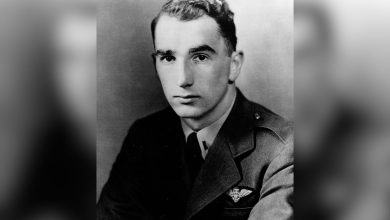Is .357 Magnum Good For Self-Defense?

The .357 Magnum has earned a legendary reputation in the world of firearms. It is revered for its raw power and proven performance in life-or-death situations.
But is it the right choice for self-defense? Whether you’re a first-time gun owner weighing your options or a seasoned shooter looking to revisit the classics, this caliber demands closer inspection.
In this article, we’ll dive deep into the pros and cons of using the .357 Magnum for personal protection. You’ll discover what makes it such a powerful option, the potential drawbacks you need to consider and how to choose the best .357 Magnum ammo for self-defense.
Understanding the .357 Magnum: History and Evolution
To fully appreciate the .357 Magnum’s strengths and weaknesses, it’s important to understand its origins and development. This iconic cartridge was born in the 1930s thanks to the pioneering work of firearm enthusiasts Elmer Keith and Phil Sharpe, who were experimenting with pushing the limits of the .38 Special. However, Phil Sharpe and Major Douglas B. Wesson of Smith & Wesson ultimately brought the .357 Magnum to market, releasing it in 1935. Elmer Keith, meanwhile, shifted his focus to what would later become the .44 Magnum.
The .357 Magnum is a .38 Special with an extra 1/8 inch of case length. While this might seem like a minor tweak, it had monumental results. The larger case capacity allowed for significantly higher velocities and energy on target.
For instance, a .38 Special loaded with a 158-grain Hornady Custom bullet reaches around 1,200 fps from a standard service revolver. The same bullet in a .357 Magnum load soars at 1,250 fps, a 34% increase in velocity.
When Smith & Wesson launched the cartridge with their “Registered Magnums,” it immediately gained traction. Shooters bragged about its accuracy, particularly when fired from longer-barreled revolvers. Law enforcement officers welcomed its ability to penetrate barriers like car doors—a critical capability when confronting the era’s rumrunners and bank robbers.
While the .357 Magnum never fully displaced the .38 Special as the standard law enforcement caliber, it became a widely used and trusted option. Its popularity endured until the 1980s when the rise of semi-automatic pistols shifted the focus of the handgun market. Even so, the .357 Magnum’s legacy remains strong and continues to be a respected choice for self-defense and beyond.
Why the .357 Magnum Excels in Stopping Power
Regarding terminal performance, there’s no shortage of debate about which defensive pistol cartridge reigns supreme. Popular auto-pistol calibers like 9mm and .45 ACP have advantages. Still, time and data suggest there isn’t a significant difference between them in real-world defensive scenarios, especially with the design of modern ammunition. Modern materials and manufacturing processes have certainly closed the gap on performance between defensive rounds.
However, the .357 Magnum stands out as a notable exception. Studies consistently show that it is between 5% and 15% more effective at stopping threats than these common semi-automatic pistol calibers.
This performance edge is rooted in the .357 Magnum’s superior velocity and energy delivery. A bullet traveling faster and hitting harder creates more tissue damage, leading to quicker incapacitation.
Tissue damage contributes to both pain and hemorrhaging, critical factors in stopping an attacker through either voluntary or involuntary collapse. Simply put, if you had to bet your life on a single shot, the .357 Magnum’s proven track record makes it a compelling choice.
Balancing Power and Practicality
Despite its impressive stopping power, the .357 Magnum does have limitations that may influence its suitability for everyday carry.
One key downside is that revolvers chambered in .357 Magnum tend to be larger, heavier and lower in capacity than semi-automatic handguns. These factors can make them less comfortable to carry, more challenging to shoot accurately under stress and less effective in extended engagements.
However, revolvers also come with significant advantages. Their simple, robust design makes them inherently more reliable, especially in high-stress scenarios.
Revolvers won’t be pushed out of battery during contact shots—when the muzzle is pressed against a target—a critical consideration for close-quarters defense. Additionally, revolvers can handle a wide range of ammunition, from mild .38 Special loads to full-power .357 Magnum rounds, making them versatile for practice and carry.
Weight Considerations for Carry Comfort and Recoil
For concealed carry, comfort often dictates whether a firearm gets carried regularly or left at home. Revolvers chambered in .357 Magnum offer a broad spectrum of weights to suit individual preferences. Lightweight options like the 17-ounce Ruger LCR are easy to carry all day, while heavier models like the 40-ounce Smith & Wesson Model 686 can feel cumbersome, much like an ill-fitting pair of shoes.
Weight also plays a critical role in managing recoil. Lighter revolvers may be easy to carry, but full-power .357 Magnum loads can produce 75% more recoil energy than the hottest 9mm loads in comparable firearms.
This can make ultra-lightweight revolvers difficult to control, particularly for follow-up shots. Many users opt to load lightweight revolvers with .38 Special or .38 Special +P rounds instead, but this reduces the cartridge’s performance to levels similar to—or even less effective than—9mm defensive loads.
For a balanced combination of carry comfort and shootability, a revolver weighing 25 and 30 ounces strikes the sweet spot. This weight is comparable to a fully loaded Glock 19 and offers manageable recoil while maintaining the full power of the .357 Magnum.
Firearms like the Ruger SP101 or the Smith & Wesson Model 60 fit this category perfectly. For example, a 3-inch Ruger SP101 paired with a high-quality holster, such as the Galco Combat Master, can ride comfortably all day while providing excellent control with hot defensive loads.
The Right Ammunition for the Job
Selecting the proper ammunition is crucial to harnessing the .357 Magnum’s potential. Defensive loads featuring hollow-point bullets maximize energy transfer and expansion upon impact, reducing the risk of over-penetration.
Bullet weights between 125 and 158 grains are common for self-defense, offering a good balance between recoil, velocit, and terminal performance.
For lightweight revolvers, lighter-recoiling loads like .38 Special +P may be necessary for better control.
However, for mid-weight revolvers like the SP101 or Model 60, full-power .357 Magnum loads are ideal for achieving optimal terminal ballistics without sacrificing shootability.
Finding the Ideal Carry Gun
When choosing a .357 Magnum for self-defense, the right firearm can make all the difference.
Lightweight options are great for concealed carry but may require compromises in ammunition or increased practice to handle the recoil. Heavier revolvers, while offering better control, can be less practical for daily carry.
Models like the Ruger SP101 and the Smith & Wesson Model 60 strike an excellent balance. Their compact size, moderate weight and ability to handle full-power loads make them ideal for those who value stopping power without sacrificing carry comfort.
Is the .357 Magnum Right for You?
The .357 Magnum’s power, versatility and proven effectiveness make it a top contender for self-defense. Its ability to outperform popular auto-pistol cartridges like 9mm, .40 S&W and .45 ACP is well-documented, particularly regarding stopping power.
However, its suitability ultimately depends on your specific needs and circumstances.
If you value simplicity, reliability and uncompromising stopping power, the .357 Magnum is an excellent choice—especially in a well-balanced revolver like the Ruger SP101 or S&W Model 60.
But if you’re sensitive to recoil, prioritize higher capacity or need an exceptionally lightweight firearm, other options like a compact 9mm semi-automatic may better suit your requirements.
Read the full article here






